Literary Elements Teaching Resources
Are ou teaching literary elements and looking for worksheets and activities to get students excited about tone, narration, plot and a host of other elements to writing a great story? How do you engage elementary students on the concept of character traits and make plot development as exciting as recess?
The ELA teachers on the Teach Starter team have done just that with a collection of printable worksheets and digital activities built around this core reading standard. Aligned with both TEKS and the Common Core English curriculum, each literary elements activity in the collection has undergone a careful review by a member of our teacher team to ensure it's ready for your lesson plans and your students.
Explore our teacher team's guide to learn more about the various literary elements and how to bring them to life in your classroom!
Is this your first year teaching this sector of ELA? Or the first year in a while? Our teacher team has put together a quick refresher to get you ready to rock and roll in the classroom, including a way to explain what literary elements are to students.
What Are Literary Elements? A Kid-Friendly Definition
First thing's first: Let's talk about the definition.
Literary elements are the basic components of writing that the author uses to share the story with the reader. Without them, the narrative falls apart!
They are sometimes referred to as narrative elements. No matter what you call them, these elements give a piece of writing structure and help the author convey information to the reader.
On the reading side, literary elements are also key to breaking down a story to understand better what the author is trying to say.
What Are Examples of Literary Elements? 8 Examples That Can Help Your Students
There are eight main examples of literary elements that students will encounter in narrative texts:
1. Setting
This element is crucial for developing a story as it provides the time in which the story takes place as well as where it takes place. Setting helps ground the story.
2. Plot
The plot is the way a story unfolds. It's essentially a pattern for the text.
3. Conflict
Conflict helps move a plot forward as it offers the reader a climax to move toward as they read.
4. Characterization
This element of writing covers the way characters are developed within a story.
5. Point of View
Also called narration, this literary element is the perspective from which a story is told, such as first person or third person.
6. Tone
The tone of a story can be boiled down to the author's attitude about the subject of the story.
7. Genre
Genre covers the type of story written, such as realistic fiction, science fiction or even magical realism.
8. Figurative Language
Similes, metaphors, and onomatopoeia are just some examples of the figurative language students encounter in a text.
- Free Plan
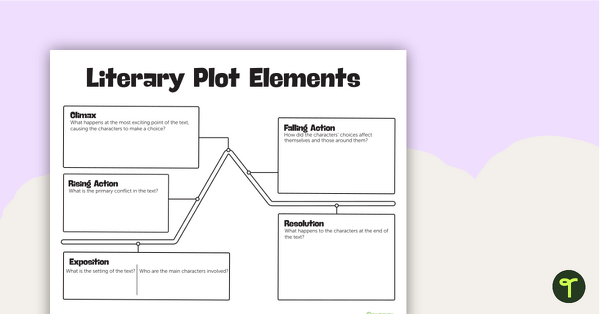
Literary Plot Elements - Graphic Organizer
Familiarize students with finding the 5 elements of plot in a literary text.
- Plus Plan

Adapt a Short Story – Change the Complication
Explore the role the complication of a story plays within narrative structure with this engaging and fully scaffolded writing project booklet.
- Plus Plan
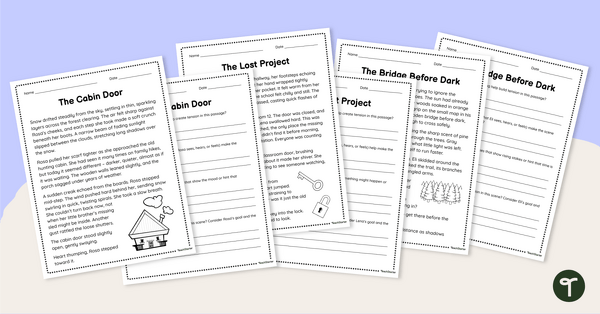
Narrative Tension – Text Analysis Worksheets
Teach narrative tension with this set of three worksheets designed to help students explore how authors build suspense and keep readers hooked.
- Plus Plan

Narrator and Point of View Digital Quiz
Discover how narrator and point of view can be taught in a fun and engaging way with this interactive quiz designed to help elementary students become confident readers and critical thinkers.
- Plus Plan
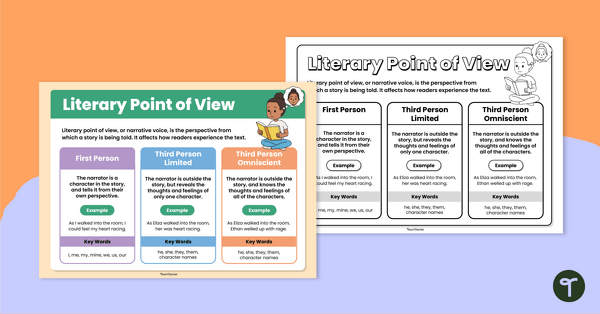
Types of Point of View in Literature Poster
Teach the types of point of view in literature with this classroom poster that explains first person, third person limited, and third person omniscient narration.
- Free Plan
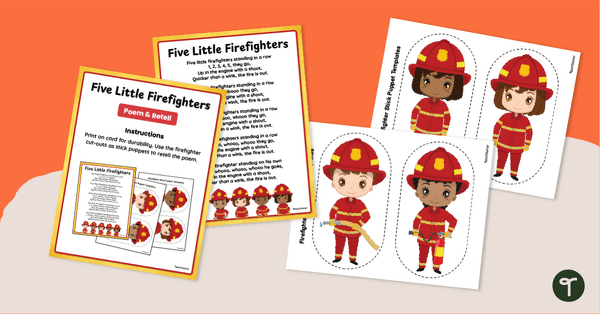
Five Little Firefighters Poem Retell Activity
Read and retell the ‘Five Little Firefighters’ poem with a printable chart and stick puppet characters.
- Free Plan
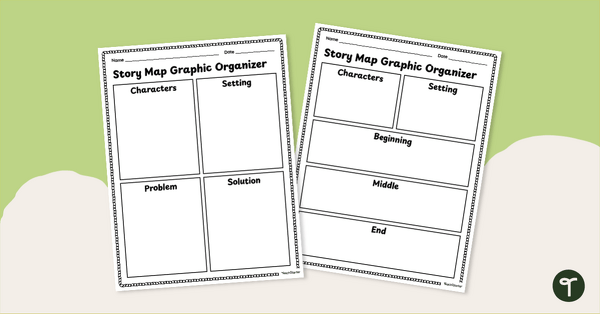
Story Map Graphic Organizer Pack
Download and use a printable Story Map Graphic Organizer to help your students make sense of story elements related to their reading.
- Free Plan

Story Elements Graphic Organizers – Portrait
Encourage your students to write and draw about various story elements with this set of differentiated graphic organizers.
- Plus Plan
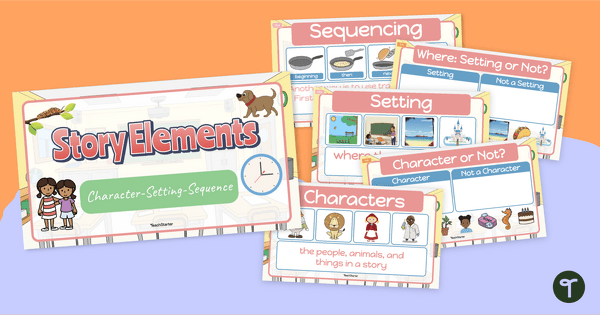
Kindergarten Story Elements - Instructional Slides
Introduce your kindergarten and first-grade students to the elements of a story using this interactive Google Slides teaching presentation.
- Plus Plan

Develop a Character Teaching Slides
Teach your students how to develop a character using the STEAL technique and other characterisation methods with this comprehensive teaching presentation.
- Plus Plan
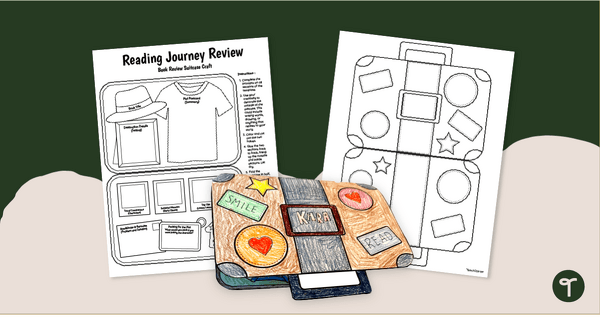
Travel-Themed Reading Craft Template - Suitcase Book Review
Show off your students’ reading journeys while having them create fun travel-themed Reading-Response Reading Crafts.
- Plus Plan
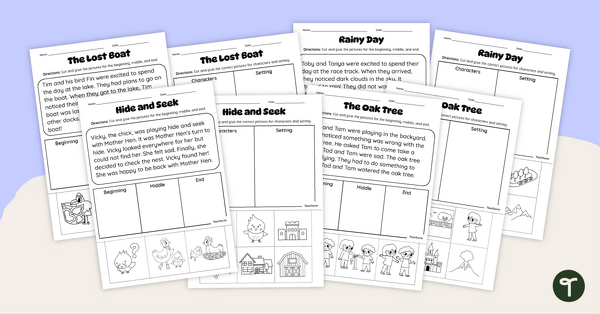
Beginning, Middle End Worksheets
Explore the main structure and story elements in a short story with these beginning, middle and end worksheets.
- Plus Plan
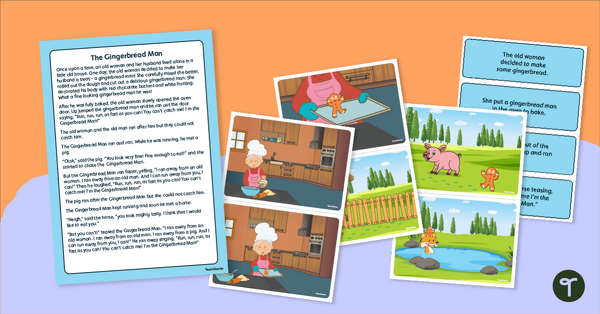
Gingerbread Man Activity - Story Sequencing Cards
Teach your students about retelling with this set of Gingerbread Man Sequencing Cards.
- Plus Plan
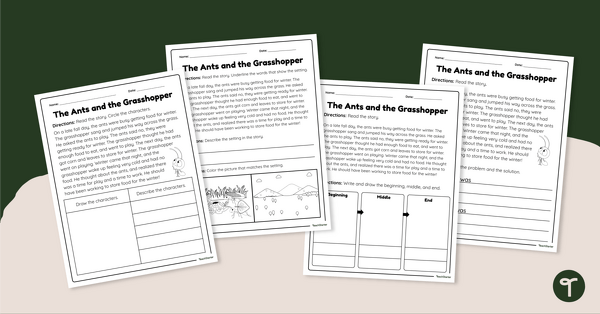
Story Elements Worksheets – The Ants and the Grasshopper
Practice identifying the story characters, settings and main events with this set of worksheets based on a traditional tale.
- Plus Plan
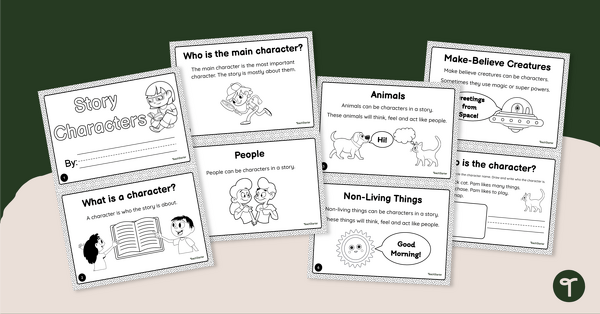
Story Characters - Mini Book
Teach your little learners about the various types of story characters with this fun-sized mini-book.
- Plus Plan
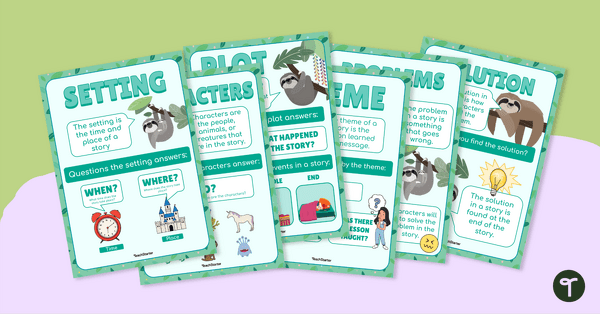
Story Elements Anchor Charts - Sloth-Themed Posters
Display these cute sloth-themed story elements anchor charts when learning about narrative texts.
- Free Plan
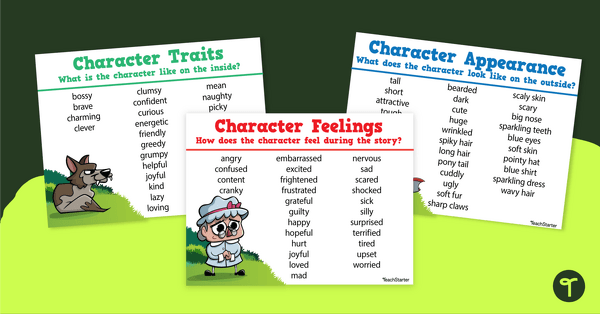
Character Anchor Charts - Traits, Feelings, and Appearances
A set of 3 posters depicting words and phrases that can be used to describe a character traits, feelings and appearance.
- Free Plan
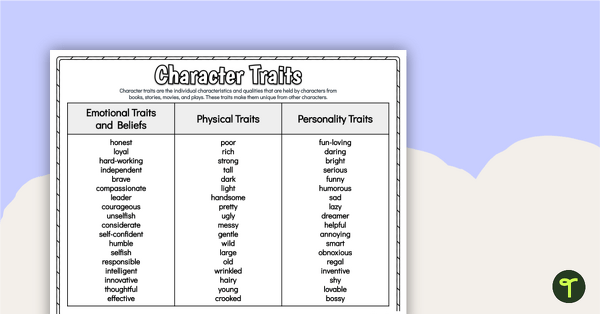
Free Character Traits List
Teach your students to analyze characters more effectively by providing them with a list of character traits.
- Plus Plan
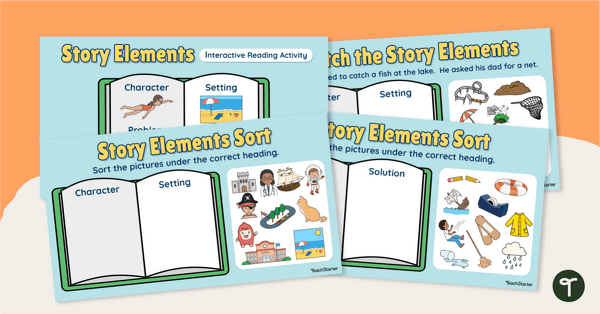
Google Slides Interactive - Story Elements Activity
Introduce your kindergarten and first-grade students to the elements of a story using this interactive Google Slides activity.
- Plus Plan
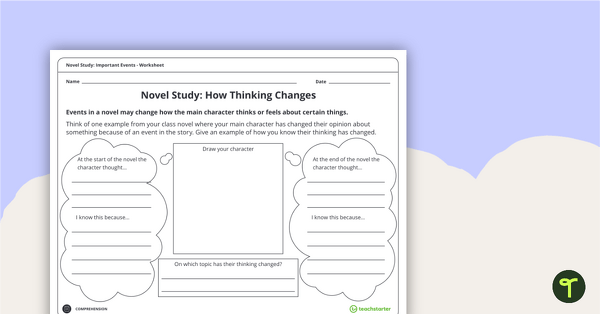
Novel Study Worksheet Pack
Download this set of novel study worksheets that can be used with any text to support your students in exploring characters and events in literature.
- Free Plan
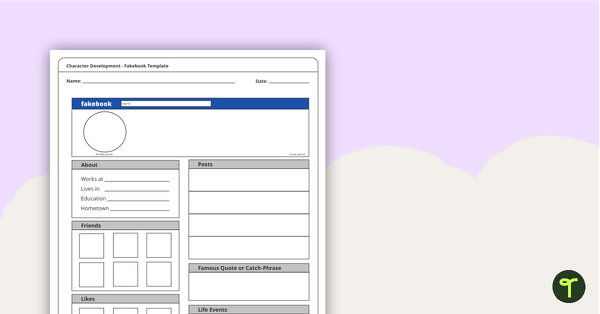
Character Development – Fakebook Page Worksheet
Use research and creative writing skills to design a social media profile for fiction or nonfiction persons.
- Plus Plan
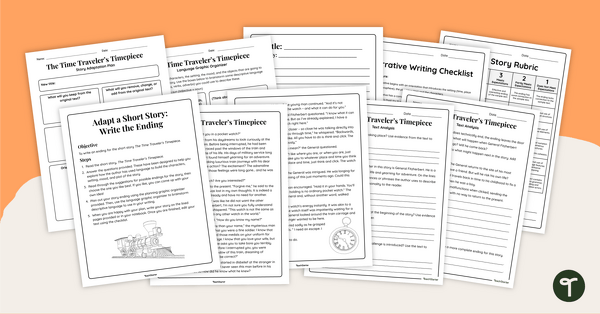
Adapt a Short Story – Write the Ending
Get your students to write the ending of an existing story with this engaging and fully scaffolded writing project booklet.
- Plus Plan

Adapt a Short Story – Change the Narrative Setting
Explore the role the narrative setting plays within a story with this engaging and fully scaffolded writing project booklet for elementary students.
- Plus Plan
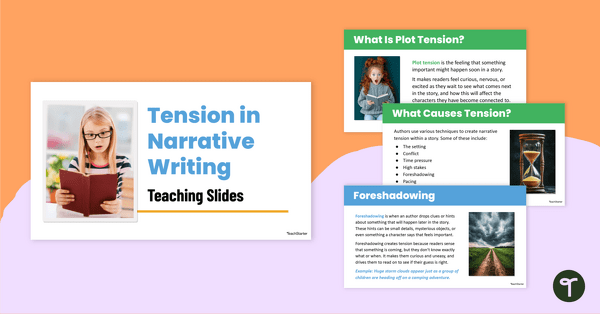
Building Tension in Narrative Writing Teaching Slides
Teach how to build tension in narrative writing with this interactive presentation that explains eight author techniques for creating suspense and excitement in stories.
- Plus Plan
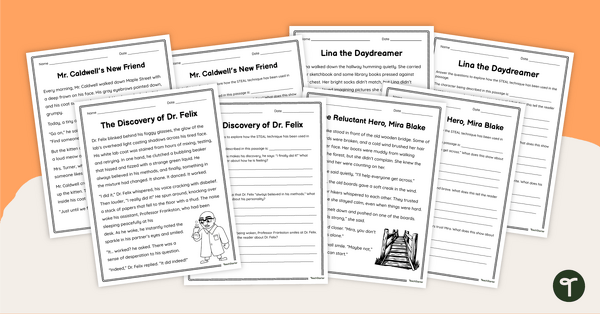
Character Description – Text Analysis Worksheets
Teach character description with this set of four worksheets that help students explore how authors use the STEAL technique to bring characters to life.
- Plus Plan
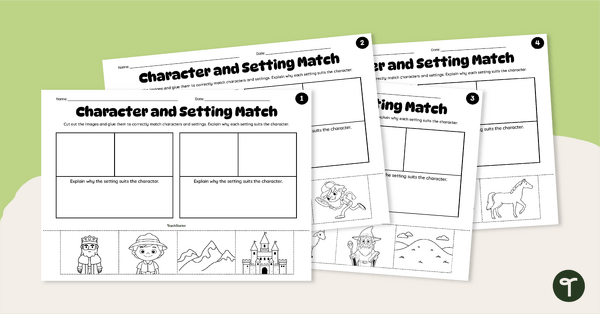
Character and Setting Connections Cut-and-Paste Pack
Explore the connection between characters and settings with this cut and paste activity pack.
- Plus Plan
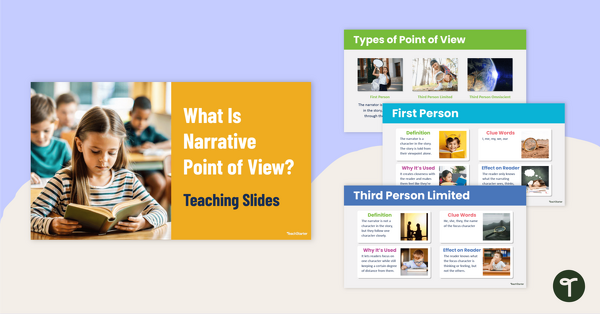
What Is Narrative Voice? Teaching Slides
Answer the question “What is narrative voice?” with this engaging slide deck that helps students understand first person, third person limited and third person omniscient narration.
- Plus Plan

Comparing Narrator’s Voice Worksheets
Teach how narrator’s voice shapes the reader's experience of texts with this set of worksheets where students compare passages written from different points of view.
- Plus Plan
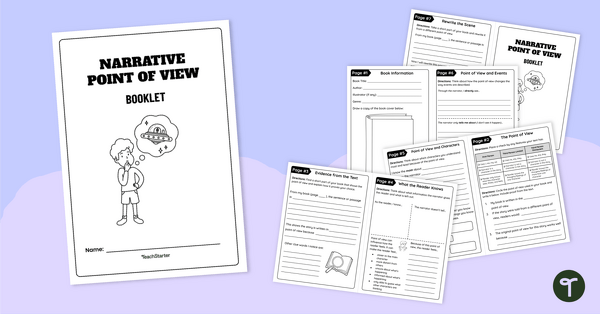
Point of View in Narration Booklet
Explore point of view in narration with this engaging mini book that helps students analyze the narrative voice of a book they have recently read.
- Plus Plan
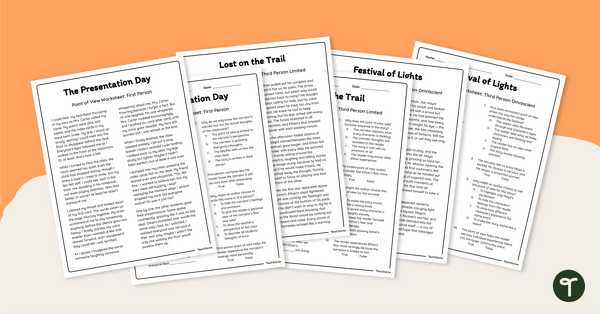
Narration and Point of View Worksheets
Use these narration and point of view comprehension passages to help students explore different narrative voices in literary texts.
- Plus Plan
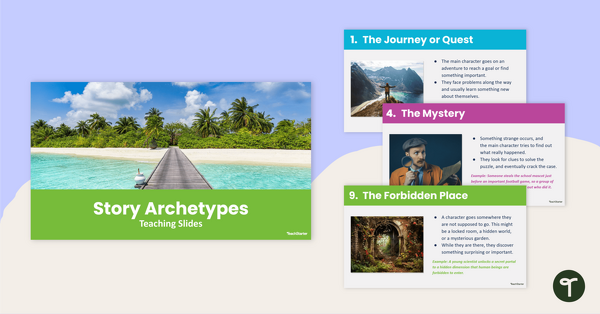
Story Archetypes Teaching Slides
Teach story archetypes with this engaging slide deck that introduces students to ten of the most common plot patterns in literature.
- Plus Plan
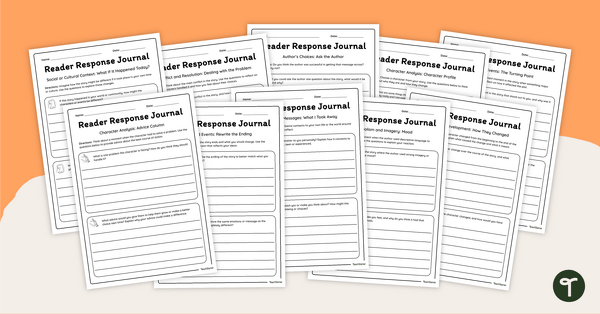
Reading Response Journal for Literature
Help students think critically about key story elements such as character, plot and theme with this 22-page reading response journal set.
- Literary Elements Worksheets
- Literary Elements Templates
- Literary Elements Games
- Literary Elements Posters
- Literary Elements for Kindergarten
- Literary Elements for 1st Grade
- Literary Elements for 2nd Grade
- Literary Elements for 3rd Grade
- Literary Elements for 4th Grade
- Literary Elements for 5th Grade
- Literary Elements for 6th Grade